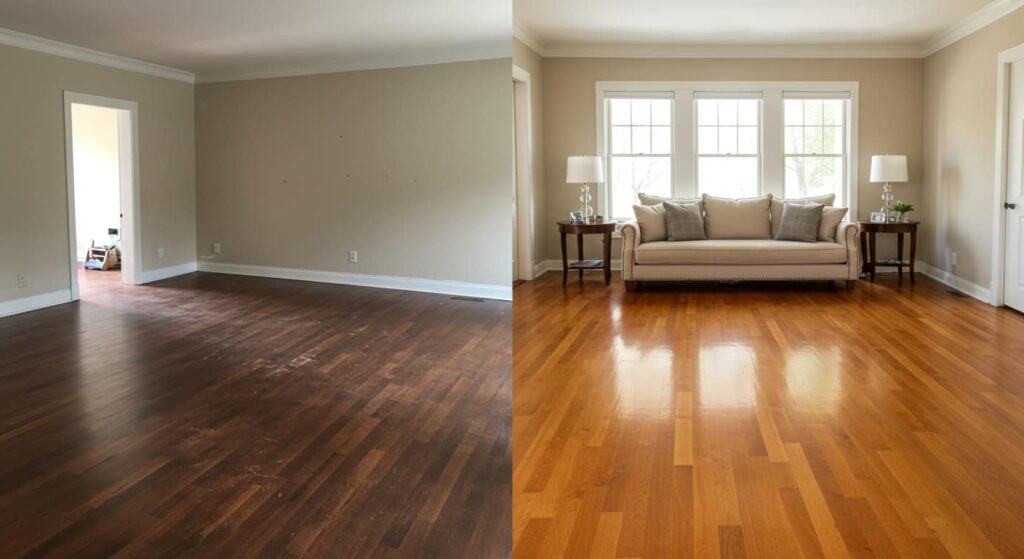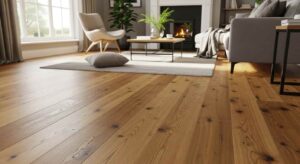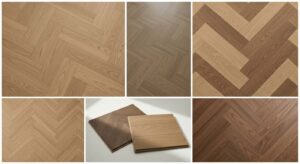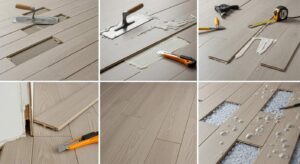Does your hardwood flooring in Brooklyn lose its shine and start looking dull? Such flooring turns vibrant spaces into lifeless ones. Whether you’re preparing for guests, putting your home on the market, or simply missing that warm, glossy glow, a lackluster floor can be frustrating and even embarrassing.
But here’s the good news: a dull hardwood floor isn’t the end, it’s just a signal. A signal that something’s not quite right and that it’s time to take action.
Today, we will be discussing why your floors have dulled, what you might be doing wrong without realizing it, and most importantly, how to bring them back to life. From simple solutions to more involved fixes, keep reading to discover how to restore the rich, elegant finish your hardwood floors deserve.
Root Cause of Dull Hardwood Floors
It’s easy to assume your hardwood floors are just getting old, but dullness is almost always a symptom, not the actual problem. To bring back the brilliance, you need to understand why that shine disappeared in the first place. Here are a few culprits behind dull wood flooring.
Everyday Wear and Tear
Over time, foot traffic from shoes, pet claws, moving furniture, and even vacuum wheels can wear down the finish layer that gives hardwood its reflective glow. Once this layer is compromised, light doesn’t bounce off the surface the same way, making your floor look tired and matte.
Built-Up Dirt and Cleaning Residue
Dust, grit, and debris act like fine sandpaper under your feet. Add to that the wrong cleaning products, especially waxy polishes or soap-based cleaners, and you’ve got a recipe for dull, streaky buildup that masks the natural beauty of your floor.
Moisture and Humidity Damage
Water is hardwood’s worst enemy. Even small spills or high humidity levels can cause micro-swelling or surface haze, leading to a cloudy, lifeless appearance. Over-wetting while mopping is a common mistake that often goes unnoticed until the shine is gone.
Sunlight and UV Exposure
Just like furniture and fabric, hardwood can fade and discolor with prolonged sun exposure. UV rays gradually break down the finish, making some areas look washed out or uneven in tone, especially in homes with lots of natural light.
Finish Deterioration Over Time
No finish lasts forever. Polyurethane, wax, or oil finishes all degrade eventually, usually within 5 to 10 years, depending on traffic and care. If your floors haven’t been recoated or refinished recently, dullness may be your floor’s way of saying it’s time for renewal.
Is Your Hardwood Flooring In Brooklyn Really Dull or Damaged?
Before you invest time or money into fixing your hardwood floors, it’s important to understand what you’re really dealing with: dullness or actual damage. The difference determines whether you can restore the shine with a quick polish, or if you’re looking at refinishing or even repair.
Dull But Not Damaged: The Finish is Just Tired
If your floor has lost its luster but still feels smooth underfoot with no visible cracks or deep scratches, chances are it’s simply the finish that has worn thin. This is especially common in high-traffic areas like hallways, living rooms, and entryways. A dull finish is typically the result of:
- Surface grime
- Residual cleaning product buildup
- Minor abrasion from daily use
The test: Shine a flashlight at a low angle across the floor. If you see a uniform haze with no deep gouges, you’re likely dealing with surface-level dullness.
Minor Surface Damage: Scratches, Swirls, and Scuffs
These imperfections might not seem like much at first glance, but over time, they scatter light rather than reflect it, leading to a flatter, dull appearance. While superficial, this kind of damage may require screening and recoating to fully restore the floor’s sheen.
True Damage: When the Wood Itself Is Affected
In cases where you notice:
- Discoloration that won’t wipe away
- Splinters or rough grain textures
- Soft spots when walked on
- Black water stains
If you notice any of these signs, you’re likely dealing with actual damage to the wood or subfloor, not just the finish. This level of wear typically results from prolonged moisture exposure, neglect, or very old floors with failing sealant.
Let’s Perform The Water Test
To check if your floor still has a protective finish, drop a few small beads of water onto a dull area:
- If the water beads up, your finish is still intact; it’s just dull.
- If it soaks in quickly, the finish is gone, and your floor is vulnerable to damage.
Brooklyn’s mix of old brownstones, pre-war apartments, and newly renovated spaces means your floors could be decades old or freshly installed. Knowing the true condition of your flooring is the first step toward bringing it back to life.
Also Read: How to Sand Hardwood Floors
Tips To Bring Your Dull-Looking Hardwood Floor Back to Life
So your floors have lost their shine, but what to do now? With the right approach, you can restore the warmth and elegance of your hardwood flooring without jumping straight into a full refinishing job. Whether you’re a homeowner in a charming Brooklyn brownstone or a renter in a modern loft, here’s how to breathe life back into those tired planks.
Perform a Deep, Residue-Free Cleaning to Strip Away the Grime
Many dull hardwood floors aren’t actually damaged; they’re just hiding under layers of dirt, old polish, and cleaning product residue. Start with a proper cleaning process:
- Use the Right Cleaner: Avoid vinegar, bleach, and multi-surface sprays. These may strip the finish or leave behind a cloudy film. Instead, use a dedicated pH-neutral hardwood floor cleaner like Bona Hardwood Floor Cleaner or Murphy Oil Soap.
- Skip the Soaking Mop: Excessive water is a top cause of dullness. Use a barely damp microfiber mop or spray cleaner sparingly.
- Target the Trouble Spots: Focus on high-traffic areas like entryways, hallways, and under dining tables. Get into the corners and edges where grime often accumulates.
- Optional Step: For tough buildup, consider using a commercial hardwood floor stripper designed to remove wax and polish layers safely.
Buff the Surface to Restore Light Reflection
Buffing is an overlooked but effective way to revive your floor’s shine without chemicals or recoating:
- Why It Works: Every day, foot traffic creates fine micro-abrasions that scatter light. Buffing helps level out these small imperfections, bringing back the surface’s ability to reflect light uniformly.
- Manual Buffing: Use a dry microfiber cloth or non-abrasive pad. Wrap it under a flat mop head and go over the floor in circular motions.
- Machine Buffing: For larger areas, rent a low-speed buffer from a hardware store. Always test on a small, inconspicuous section first.
- Buff with the Grain: Always work in the direction of the wood grain to avoid swirl marks.
Apply a High-Quality Hardwood Floor Polish
Once your floors are clean and smooth, it’s time to reintroduce shine using a polish specifically designed for hardwood:
- Choose the Right Product: Match your polish to your existing finish, typically polyurethane-based. Look for low-VOC, non-toxic options for indoor safety.
- Preparation Is Key: Sweep, vacuum, and mop before applying polish. Any debris left behind can cause visible streaks or bubbles.
- Apply Thin, Even Coats: Use a clean microfiber pad or applicator. Pour polish in an “S” shape and spread it thinly across small sections, working your way out of the room.
- Drying Time: Let it dry at least 1–2 hours before walking on it, and avoid replacing rugs or furniture for 24 hours.
Use a Floor Reviver for Deeper Restoration Without Sanding
If standard polish doesn’t bring the results you want, consider a floor reviver or refinisher. It is a stronger, acrylic-based treatment designed to restore a worn-out surface.
- When to Use It: Ideal for floors that have dullness plus light scuffs or finish wear, but are not yet ready for full sanding.
- Curing Time: Allow up to 7 days for full curing (depending on the product); however, light foot traffic is usually acceptable after 24–48 hours.
Implement Smart Preventive Maintenance to Keep Floors Looking Fresh
Once you’ve revived your hardwood floors, consistent care is the key to keeping them vibrant:
Daily Maintenance:
- Sweep or use a dust mop daily to remove grit and debris.
- Use a vacuum with a hardwood-safe floor brush (no beater bars!).
Weekly Maintenance:
- Damp-mop with a hardwood floor cleaner to prevent buildup.
- Clean under furniture and in corners.
Protective Measures:
- Place felt pads under all furniture legs.
- Use rugs or runners in high-traffic areas.
- Avoid walking on floors with high heels or cleats.
Seasonal Strategy for Brooklyn Homes:
- Use a humidifier during dry winter months to prevent cracking or shrinkage.
- A dehumidifier can help prevent floor expansion or cupping.
Also Read: How to Polish Hardwood Floors
Cleaning Mistakes That Make Your Hardwood Floors Look Worse
Even with the best intentions, improper cleaning habits gradually rob your hardwood floors of their natural luster. Many homeowners unknowingly cause more harm than good simply by following outdated advice or using the wrong products. If your floors look duller after cleaning, it may be time to evaluate your routine. Here are the most common cleaning mistakes that could be making things worse.
Using Vinegar and Water as a DIY Cleaner
Vinegar is often touted as a natural, budget-friendly cleaning solution. While it’s great for cutting through grime on some surfaces, it can be incredibly damaging to hardwood floors. The acidity in vinegar slowly breaks down the floor’s finish, leaving behind a dull, cloudy appearance. Over time, repeated use of vinegar and water will degrade the protective seal, exposing the wood to damage and making it harder to restore its shine. Instead of vinegar, always use a pH-neutral hardwood floor cleaner specifically designed for sealed wood.
Over-Wetting the Floors During Mopping
Too much water is one of the most common causes of hardwood floor dullness and damage. While a clean, wet mop might seem effective, it introduces moisture that can seep into the seams and joints of your floorboards. This excess moisture may lead to warping, cupping, and long-term finish breakdown. Mops should be only slightly damp, not dripping wet. Always wipe the surface dry immediately after mopping to avoid water spots or streaks that contribute to a lackluster look.
Using Steam Mops on Sealed Hardwood
Although many steam mop manufacturers claim their products are safe for hardwood, the truth is more complicated. Steam introduces both heat and water under pressure, which can cause the finish to blister, swell, or peel over time. Even sealed wood isn’t immune—moisture can penetrate micro-cracks in the surface and create irreversible damage. If your goal is long-term shine and preservation, it’s best to avoid steam entirely and stick to gentle, dry, or lightly damp cleaning methods.
Applying Wax on Polyurethane-Finished Floors
Waxing hardwood floors used to be the standard method for restoring shine, but with modern polyurethane finishes, it’s now a mistake. Wax does not adhere well to polyurethane. Instead, it creates a slick, greasy layer that can actually attract dirt and dust. This residue becomes increasingly difficult to clean and gives floors a sticky or blotchy appearance. Worse, once wax is applied, it must be stripped before any refinishing can occur. If your floors are sealed with polyurethane, use a compatible polish or floor restorer instead of traditional wax.
Using Multi-Surface or Oil-Based Cleaners
Multi-surface cleaners and oil-based products are not designed for hardwood flooring, even if the label claims otherwise. These products often contain silicone or oily additives that leave behind a residue. While they might temporarily make floors look shinier, the effect fades quickly, leaving behind a hazy, smeared film. This build-up not only dulls the appearance but also interferes with future maintenance like recoating or refinishing. For best results, stick to cleaners formulated exclusively for hardwood floors, and steer clear of anything that promises a quick, glossy shine.
Neglecting to Sweep or Vacuum Before Mopping
Skipping the sweeping step might seem harmless, but it can be disastrous for hardwood floors. Tiny particles of dirt, grit, and sand act like sandpaper when dragged across the floor during mopping. These abrasives create fine scratches that dull the finish over time. The more frequently the floor is cleaned without proper pre-sweeping, the more pronounced the dullness becomes. Establishing a consistent habit of sweeping or vacuuming before wet cleaning can help preserve the floor’s surface and keep it looking fresh and vibrant.
Let’s Bring Back Your Dull Looking Hardwood Flooring in Brooklyn, With Floorika Fine Hardwood
Is your hardwood flooring in Brooklyn looking dull, tired, or lifeless? Don’t worry, Floorika Fine Hardwood is here to help you bring back the natural beauty and elegance of your floors. With years of specialized experience in hardwood floor care, our team understands exactly what it takes to restore your floors without unnecessary sanding or expensive replacements.
Whether it’s deep cleaning, polishing, buffing, or full refinishing, we tailor our services to match your floor’s condition and your home’s style. We use premium, eco-friendly products and state-of-the-art equipment to revive the warmth, depth, and shine your hardwood once had.
At Floorika Fine Hardwood, we treat every floor like a fine piece of craftsmanship, because it is. If you live in Brooklyn and want to fall in love with your floors again, give us a call. Let’s restore your hardwood to its full potential.




